Experience year-round beauty and easy elegance by Growing Heather in Pots! Read on and learn everything in detail!
Whether you’re a seasoned gardener or a newbie, this guide is your passport to creating a thriving Heather haven. Discover the magic of these hardy, ever-blooming wonders as we unveil the art of Growing Heather in Pots.
Growing Cylindrical Snake Plant | Sansevieria Cylindrica Care
Heather Plant Information
Heather plants, botanically known as Calluna vulgaris, belong to the Ericaceae family, which is the same family that includes rhododendrons and blueberries. These lovely plants are native to regions like Europe, North America, and Asia. They are well-known for their delicate appearance and are often found in heathlands, moorlands, and other open areas with acidic soils.
Heather plants have petite, needle-like leaves that are usually green, but they can turn various shades of bronze and purple in colder months. During the summer, they burst into a vibrant display of small, bell-shaped flowers that can be pink, purple, or white.
What makes Heather plants unique is their ability to thrive in poor soils and harsh conditions. They’re also a favorite of bees and other pollinators, making them not just pretty to look at but beneficial to the local ecosystem as well.
How to Force a Snake Plant to Produce Pups
Best Heather Varieties
1. Anne Sparks
This variety of Heather features beautiful pink flowers and distinctive needle-like, bronzy-red foliage. It blooms between January and May and grows up to six inches high.
2. Dark Beauty
Also known as Calluna vulgaris, Dark Beauty boasts semi-double flowers and dark green foliage. It is easy to maintain and prefers moist, well-draining soil and is the perfect Heather in a pot variety.
3. December Red
December red Heather is easy to grow and produces nectar that attracts bees in winter. It blooms between early to late winter and flowers stunning urn-shaped flowers.
Best Red Flower Names
4. Firefly

Firefly is a recipient of many international flower awards including the Award of Garden Merit from Royal Horticultural Society. Want to grow Heather plant in pot? This variety is your best choice.
5. Foxhollow
Foxhollow Heather is perfect for rock gardens and flowers from December to April. It depicts golden-colored foliage and bell-shaped beautiful pink flowers. Foxhollow prefers full sun and acidic, moist, well-drained soil to grow.
Propagating Heather Plant
Ways to Propagate Heather Plant
- Seed propagation
- Cuttings
- Layering
- Division
The Most Popular and Reliable Method: Cuttings
Cuttings are generally considered the most reliable method of propagating heather in pots. This is because Heather plants can be somewhat challenging to grow from seeds due to their specific soil and germination requirements. Now that you know the best way, let us see How to grow heather!
Steps to Propagate Heather from Cuttings
Follow these steps to successfully propagate Heather in pots and enjoy a home full of these beautiful, resilient plants.
- Select Healthy Parent Plant: Choose a healthy, mature Heather plant with vibrant growth and disease-free foliage as the source for your indoor potted cuttings.
- Prepare Cutting Material: Using sharp, clean pruning shears, cut 4-6 inch (10-15 cm) sections of young, non-flowering Heather branches during the late spring or early summer. These cuttings will serve as the basis for your indoor potted plants.
- Remove Lower Leaves: Trim off the lower leaves from each cutting, leaving only a few leaves at the top. This helps reduce moisture loss and encourages root development.
- Dip in Rooting Hormone: Dip the cut end of each cutting in a rooting hormone powder or gel to promote root formation, a crucial step for successful indoor propagation.
- Potting Mix: Use a well-draining potting mix suitable for Growing heather, or create a mixture of peat moss and perlite. Fill small pots or containers with this mix to plant your cuttings.
- Plant Cuttings: Insert each cutting into the prepared pots, ensuring that the leafy part is above the soil while the cut end is beneath. Firmly press the soil around the cutting to provide stability.
- Moisture Balance: Heather cuttings need consistent moisture, but it’s crucial to strike a balance to avoid overwatering. The soil should be evenly moist but not waterlogged. Watering too much can lead to rot, while underwatering can cause the cuttings to dry out.
- Indoor Environment: Place the potted cuttings in a bright location indoors with indirect sunlight, maintaining a temperature range of 65-75°F (18-24°C). You can cover the pots with clear plastic bags or use a propagation tray with a lid to maintain high humidity levels.
- Regular Monitoring: Keep a close eye on the cuttings for signs of root growth, which may take several weeks to a few months.
Once the roots are well-established, transplant each young Heather plant into a larger indoor container or choose a suitable indoor garden location.
Propagate Any Plant Cutting Quickly Using this Trick
Advantages of Cuttings
- Genetic Replica: Cuttings create genetic replicas of the parent plant, maintaining its characteristics.
- Easy Rooting: Heather cuttings root relatively easily, increasing the success rate of propagation.
- Controlled Environment: Conditions can be controlled more precisely when using cuttings, providing an optimal growth environment.
Choosing a Container for Heather
Choose containers with a diameter of at least 8-12 inches (20-30 cm) to provide ample space for the Heather to grow comfortably.
Ensure the pots have drainage holes to prevent waterlogging, as Heather prefers well-draining soil. Larger pots will also help maintain moisture levels and create a more stable environment for these beautiful indoor plants.
Requirements for Growing Heather in Pots
Going to Plant heather in pots? Pay attention to the following to make sure it stays healthy.
Sunlight
Heather plants do best with 4-6 hours of indirect sunlight daily. Avoid harsh direct sunlight, especially at midday, as it can harm their leaves. Placing them near south- or west-facing windows with sheer curtains or using grow lights works well if natural light is limited.
Soil
Heather prefers acidic, well-draining soil. Use a mix for acid-loving plants or blend peat moss, perlite, and a bit of sand for Growing heather. Ensure good drainage by selecting pots with drainage holes to prevent waterlogging.
How to Make Your Own Potting Soil | Potting Mix Recipes For Everything
Water
You should keep the soil consistently moist but not soggy. Water when the top inch (2.5 cm) of soil feels dry. Use room-temperature, distilled, or rainwater, as Heather is sensitive to tap water chemicals. Water at the base to avoid wetting leaves, which can lead to fungal problems.
Temperature
Heather thrives in cooler conditions, around 60-65°F (15-18°C) during the day and slightly cooler at night. Avoid temperature fluctuations and drafts. In hot weather, place Heather in cooler spots or use fans for better air circulation while maintaining indirect light exposure.
Maintain average indoor humidity levels when Planting heather in pots. There’s no need for extra humidity unless your home is exceedingly dry.
Growing Heather in Pots – Care
Don’t know How to care for heather in pots? It’s really simple. Here’s what you should pay attention to.
Fertilizer
Heather plants have modest fertilizer needs. Feed them with a slow-release, acidic fertilizer designed for Heathers or rhododendrons in the early spring, just as new growth begins. Avoid fertilizing during the dormant winter months. Overfertilization can harm Heather, so follow package instructions carefully, and a little goes a long way.
Dried Banana Peel Powder Fertilizer at Home for Any Plant
Pruning
If you don’t know How to grow heather in a pot properly, you should put some focus on pruning. Pruning Heather helps maintain its compact shape and encourages new growth. After the flowering period in late spring or early summer, lightly trim back the faded flowers and any leggy or overgrown branches.
Be cautious not to cut into the woody stems, as Heather won’t readily regrow from these areas. Pruning also stimulates the development of more vibrant blooms for the following season.
Overwintering
Heather plants are hardy but can still suffer winter damage in severe cold. Mulch the base of the plant with a layer of pine needles or straw to insulate the roots and help retain moisture when you grow Heather in a pot.
During the winter, cut back on watering, as Heather prefers drier conditions. Only water when the soil is exceptionally dry to avoid waterlogged roots. Lightly prune after flowering to maintain shape but avoid heavy pruning in late fall or winter, as it can leave the plant vulnerable to frost.
Pests
- Spider Mites: These tiny arachnids can suck the sap from Heather leaves, causing stippling and webbing.
- Aphids: Aphids feed on the plant’s sap and excrete a sticky substance known as honeydew, which can attract other pests and lead to sooty mold growth.
- Whiteflies: Whiteflies are small, winged insects that feed on Heather sap and can cause leaf yellowing and deformation.
- Heather Beetles: These beetles chew on Heather leaves, often leaving behind skeletonized foliage.
39 Bizarre Pest Control Remedies and Ideas for Gardeners
Diseases
- Powdery Mildew: A fungal disease that appears as white, powdery spots on Heather leaves, affecting their photosynthesis and overall health.
- Root Rot: Caused by overly wet soil or poor drainage, it can lead to wilting, yellowing, and eventual death of the plant.
- Leaf Spot: Fungal infections causing dark spots on Heather leaves, potentially leading to leaf drop and reduced vigor.
Growing Heather in Pots – FAQs
1. Can Heather Grow in Pots?
Still wondering, “Can you grow heather in pots?” Yes, Heather can absolutely thrive in pots! This beautiful and hardy plant adapts well to container gardening, making it a great choice for small gardens or patios.
2. What to Plant With Heather in Pots?
When selecting companion plants for Heather in pots, opt for those with similar sunlight and watering needs. Trailing vines like ivy or colorful annuals such as petunias and marigolds can create a visually appealing contrast. Ornamental grasses like fountain grass or blue fescue can add texture.
Best Nightshade Vegetables and Fruits to Grow in Pots and Garden
3. Where Does Heather Grow?
Heather is native to Europe, North America, and Asia. It thrives in heathlands, moorlands, and open woodlands, typically in acidic, well-draining soils.
4. How is Heather and Mexican Heather different?
Heather is a distinct plant belonging to the Calluna genus and is known for its hardy, evergreen nature. It has needle-like leaves and produces small bell-shaped flowers.
Mexican Heather (Cuphea hyssopifolia), on the other hand, is a different species altogether. It is native to Mexico and has a more delicate appearance with small, tubular flowers.
5. Mexican Heather in Pots Care
Mexican Heather does wonderfully in pots! Ensure a well-draining potting mix, place it in a sunny spot, and water it consistently to keep this charming plant thriving.



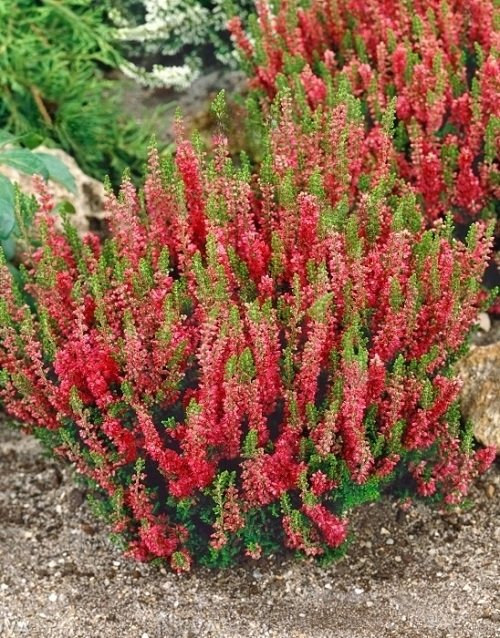
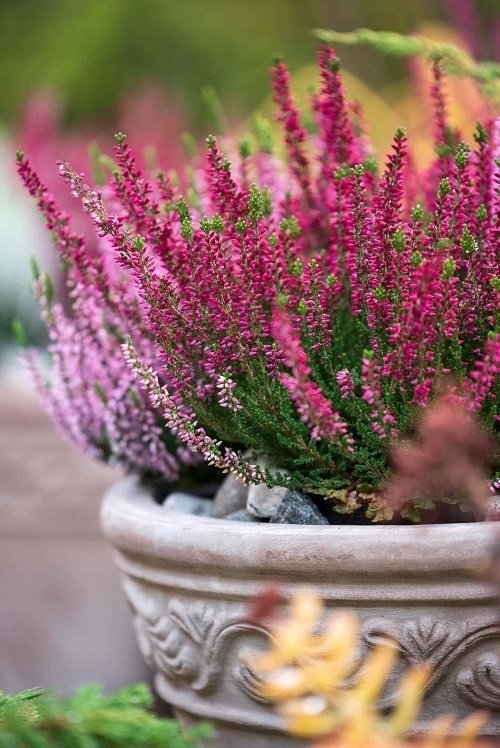
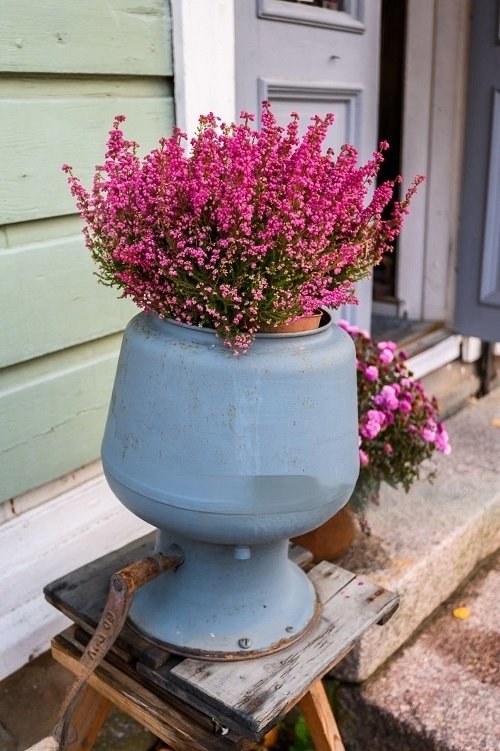
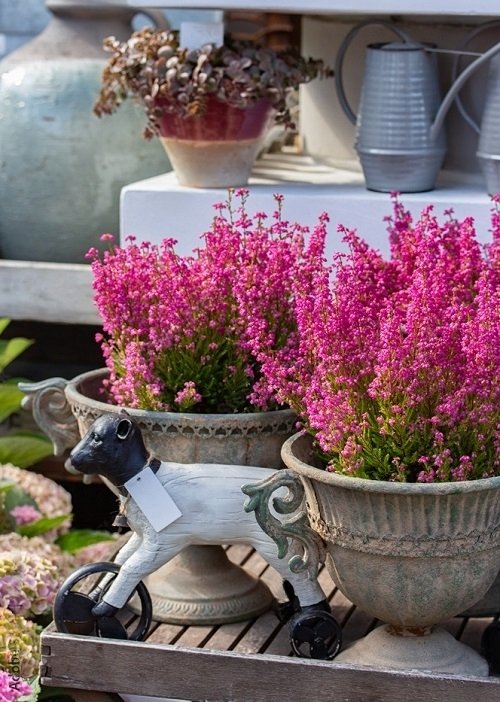
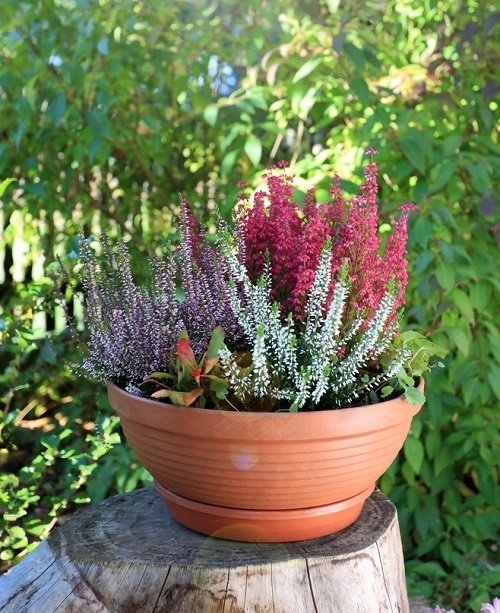

HI:
I just received a beautiful little heather as a gift. I would like to keep it as a potted indoor plant. I have a good indoor sun location. Here is my question… I read that this plant needs to be kept moist in acidic soil to be successful. I can manage the re-pot with the soil, BUT, would it be appropriate to re-pot in an African violet, bottom water planter?
Thank you!
Eric